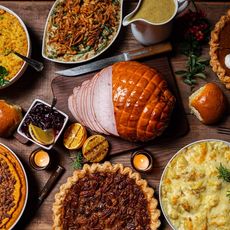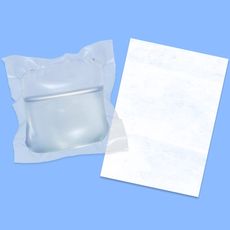All About Wildflowers

Chelsea Burns, Content Editor
April 12, 2023
Wildflowers aren’t just a thing of beauty, they’re the unsung heroes of our planet – storing water and nutrients for the soil, holding onto carbon and providing food to insect and animal species living in the region. For such a powerhouse plant, you’d think we’d talk about them more but these blooms have been taken for granted. "Meadows are particularly invisible,” Fiona Guest, from Scotland’s only commercial wildflower seed producer, told the BBC. “We see trees more easily but we don't see how a meadow is like a tiny forest, full of different levels of plants, providing food and a home for a wide range of beasties and also, literally knitting the ground together."
In order to help maintain biodiversity, we need to preserve our wildflowers. The UK has lost 97% of their wildflower meadows since the 1930s and experiments in the US show that the rising temperatures due to climate change could have a major impact on what wildflowers remain. And though it’s sad from a visual perspective, losing wildflowers would have major implications on pollinators and other ecosystems that rely on these native plants. An article published in the journal Nature in 2016 actually showed evidence to support the link between plant and pollinator decline.
Why are wildflowers in decline?
In the UK, the main contributing factor to the decline has been the development of land for property and changes to farming methods. But across the world, particularly more suburban areas, it’s also due to our gardening practices and the popularization of manicured lawns and decorative plants over vegetable or herb gardens or having long grasses growing in yards. And, of course, the use of pesticides used in industrial farming.
How we can help:
A wildflower is a flower that grows without any help from people, they grow naturally in their environment. People may grow wildflowers in their garden, but most wildflowers are native plants and grow in woods, meadows, wetlands – anywhere they’ve adapted to grow. So, if you have something flowering in your yard, there’s probably a reason (hint: it’s feeding something!). So, let it bloom, and then pull it out (if you need to).
Another way you can help is by planting native plants and wildflowers in your yard and garden. Studies have shown that native wildflowers are four times more attractive to pollinators than non-native wildflowers! Some native wildflowers cater specifically to their pollinators, and have evolved to be a particular shape, color, size, and flowering season to attract their target pollinator. Not sure what’s native to your area? Wildflower seeds are usually sold by a certain growing region so check for that first. If you still can’t find it, ask your local plant nursery.
Wildflower Seed Bomb How-To
Another way to get wildflowers blooming is by making wildflower seed bombs that you can toss into empty fields. If you were one of the lucky 200 that was able to snag one of our seed paper inserts, you can use that to make one, but if not, follow the instructions below from this NY Times article.
What you’ll need:
- Mixing Bowl
- Baking Sheet
- Native Wildflower Seed Mix
- Powdered Clay
- Fine Compost
Directions:
- Mix one part wildflower seeds (the whole packet) with four parts powdered clay, and five parts compost.
- Stir in water slowly until you have a thick, bread-dough-like consistency.
- Roll the dough into dime-to-nickel sized balls and set them on a baking sheet and let them dry out in the sun.
- Toss them out into a sunny spot, preferably on bare soil, before a rainfall, trying to keep the ball intact so it’s better shielded against the elements and hungry creatures.
Where to See Wildflowers
California superblooms have probably become the most well-known wildflower blooms but you can view wildflowers all over the country. The U.S. Forest Service has a directory where you can search by state to find the nearest wildflower viewing area.
How to be a Responsible Wildflower Spectator
Wildflower blooms are a marvel for sure but they’re meant to be just that—a marvelous sight, to view the beauty with your eyes and leave no trace that you were ever there so that nature can keep doing its thing.
Don’t pick the wildflowers
While it can be tempting to want to pick a wildflower, it’s not worth it for many reasons:
- They wilt shortly after being separated from the other parts of the plant, which had been providing the flower with water and sugar.
- Picking a flower causes that plant to lose its reproductive ability, so in the future, there could be less wildflower seeds in the ground.
- Picking flowers also means other people won’t be able to enjoy them, nor will the pollinators and other animals that depend on wildflowers for food and cover.
Stay on the designated path
Similarly to picking wildflowers, stepping on wildflowers (even for a quick photo!) harms them in a similar way and even prevents wildflowers in the future from growing. Just one flower getting trampled wouldn’t do much damage to the ecosystem, but if everyone visiting a natural area with wildflowers picked one flower (consider that the Golden Gate National Recreation Area has more than 17 million annual visitors), then the impact on the landscape would be insurmountable. (Source)
Leave your pets at home
Pictures of your pup next to a superbloom… cuteness overload. It’s understandable why you’d be tempted to bring your four-legged friend along for your wildflower excursion but, for the flowers’ sake, it’s best to leave them at home. Even the most well behaved dogs can have a hard time staying on the path and, not to mention, their doggy business isn’t good for the plants.


